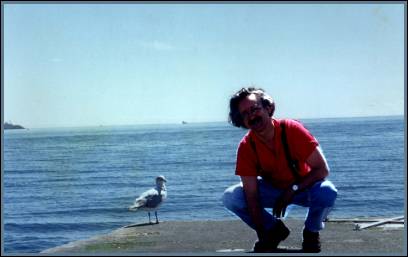 |
| Performance & Theatre | Opera | Review Highlights | DS Keyboard | Bio | Contact |
|
Chamber Music Rashomon Quartet The Seagull Music-by-the-Sea 7 Encounters Orchestral Theme & Conversations for Orchestra Symphony Erotica The Little Match Girl The Seagull Empire Fanfare Choral Choral Prophecy Symphonic Choral Prophecy Piano Music Three Piano Pieces Opera Eyes on The Mountain |
The Seagull
for String Quartet and oboe at a distance total duration: 18:00
 ... each Seagull movement depicts a different character in Chekov's play ... Such vivid tone painting shows that Donison follows his own philosophy. "Music," he said, "is a communicative art form."
About the work The Seagull was commissioned n 1997 by the Shaw Festival in Niagara-on-the-Lake to accompany their production of The Seagull by Anton Chekov. Written for string quartet and oboe at a distance, it is in four movements after the four principal characters and the presence of an off-stage oboe in the fourth movement is allegory for the Seagull as Nina. All four are related in the same thematic material, but the theme does not present itself intact until the last movement. In a departure from the normal practice of writing individual sections of music for specific scenes in a play, the entire quartet was written first, in four movements after the four principal characters in the play, and then a recording of the work was turned over to the director Neil Munro to use in edited form as he wished for the play. This allowed for a complete and satisfying musical expression of ChekovŐs characters and creation of a stand-alone concert work. The full concert work was premiered by the Amati at Shaw Festival in
the Summer of 1997 and recorded by them for the production.
1 The Writer Review The Globe and Mail Saturday, October 11, 1997
ONE TO WATCH ....each Seagull movement depicts a different character in Checkov's play. Donison goes in for melodic snippets rather than full fledged hummable tunes, and adds spices with vigorous clashes of neighbouring keys, in the manner of Hindemith and Britten, The third movement, for instance, evokes the fragile suicidal personality of Constantine. It opens with a low C-sharp in the cello played against C-natural harmonic five octaves higher in the first violin. The wide open, empty, dissonant clash certainly conjures up a tortured mental state. Then the score portrays Constantine's psyche struggling stubbornly not to fly apart. Donison calls for wild, weepy-sounding double stop slides in the cello's highest register, and a repetitive pattern of notes in the viola (which epitomizes his fondness for traditional forms such as the Baroque canon). Such vivid tone painting shows that Donison follows his own philosophy. "Music," he said, "is a communicative art form." Complete Actual Review |
|
All Music Compositions, Recordings and Images copyright © 2002 Christopher Donison. All rights reserved. Web Design under permission of Christopher Donison copyright © 2002, Urban Web Design Inc. |